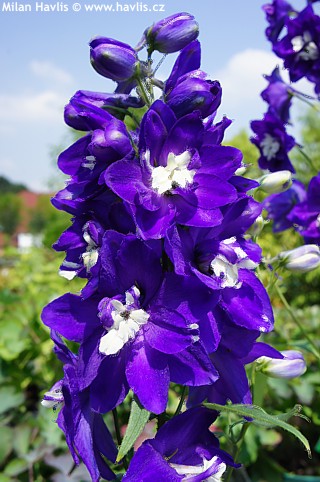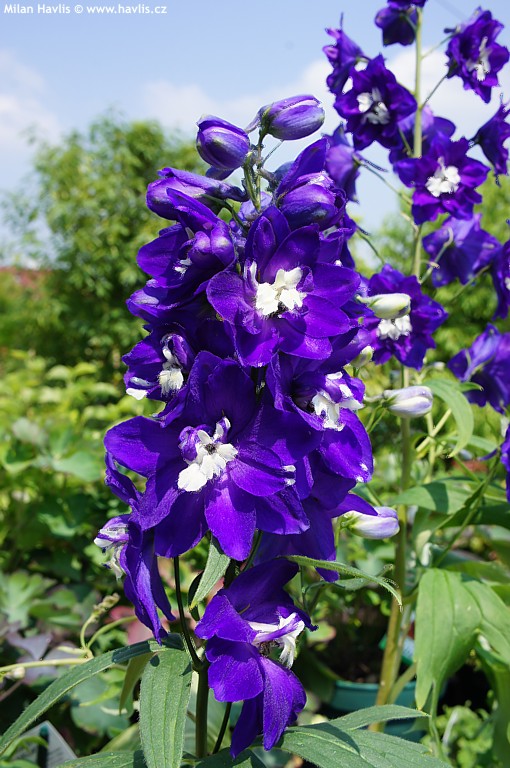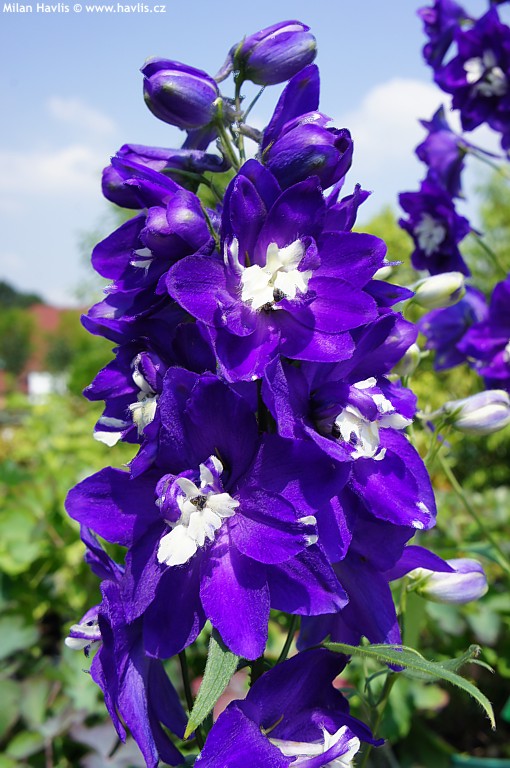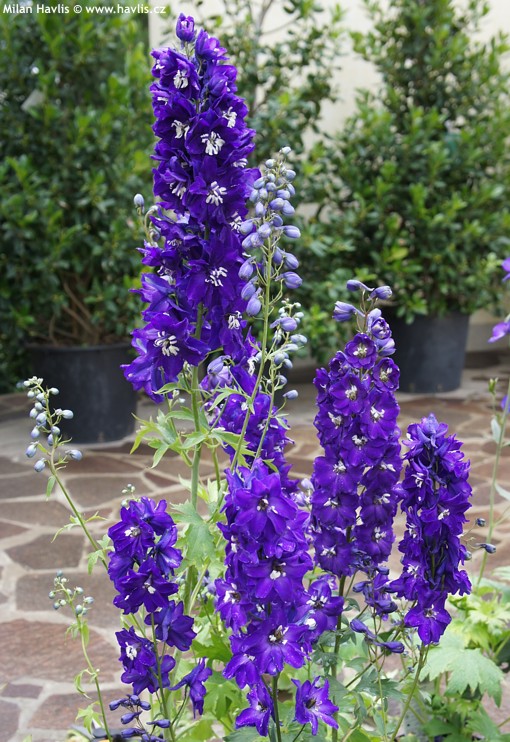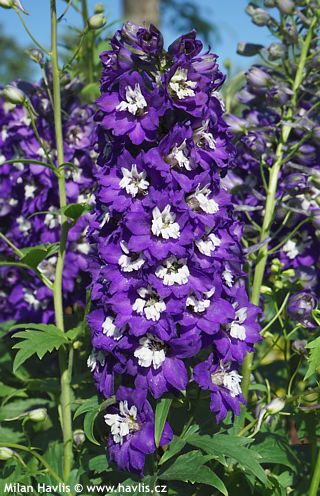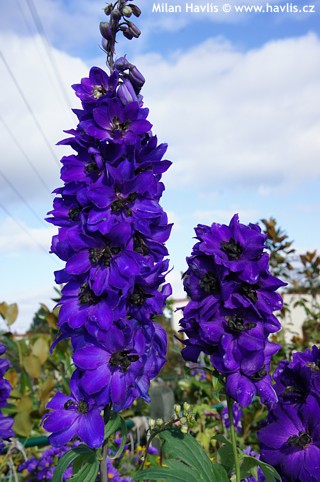Delphinium (Pacific Hybrids) 'KING ARTHUR' larkspur
size/type
tall perennial,tall perennial
usual height
1,3-1,8m
usual width
0,3-0,5m
leaves
deciduous broadleaf
colour of leaves
flowers
showy
colour of flowers
blooming time
July-September
location
full sun
USDA zone (lowest)
4 (down to -34°C)
winter protection
for zone 5+6

for zone 7

categorized
Delphinium
Larkspur is a favourite perennial where varieties with blue flowers are most popular. Though, in modern gardens and better garden centres you can find new varieties with pink shades or even purple-red shades as well as white. The name delphinium was used to describe the shape of the flower bud which looks like a dolphin (rather a fat one).Description of the plant:
King Arthur is supposedly a legend but in case of this perennial it is a living proof that larkspur is a gorgeous plant. It belongs to Pacific Hybrids group and from early July produces rather tall stems with rich spikes of fantastic royal violet-blue flowers. The bee in the centre is pure white and contrasts perfectly with the deep blue colour of the flowers. The older and stronger the plant gets, the more flowers are borne along the stems and the taller the stem grows. Deciduous, basal leaves are palmate, deeply lobed, mid green, up to 20 cm across.Once the flowering has finished you can cut back the entire plant for the second flush in late August and September, possibly October. It is incredible to see rich colours of late flowering perennials in autumn gardens when most other plants are slowly fading away.
Grow larkspur in any well-drained, humus-rich garden soil in full sun. It will benefit from mulching as it likes constant moisture. The plant contains toxin which may cause severe discomfort if ingested, or, to some, it may irritate skin. The plant is short-lived unless you once in 3-4 years dig out the clumps in the spring, divide them, and plant back only the young and healthy ones. Use a high phosphorus fertilizer every year for profuse flowering. Fully hardy to min. -34°C (USDA zone 4), possibly more.
Last update 06-07-2012
QUICK PRICE OVERVIEW
CURRENTLY SOLD OUT
WANT TO TRY A SIMILAR PLANT?












